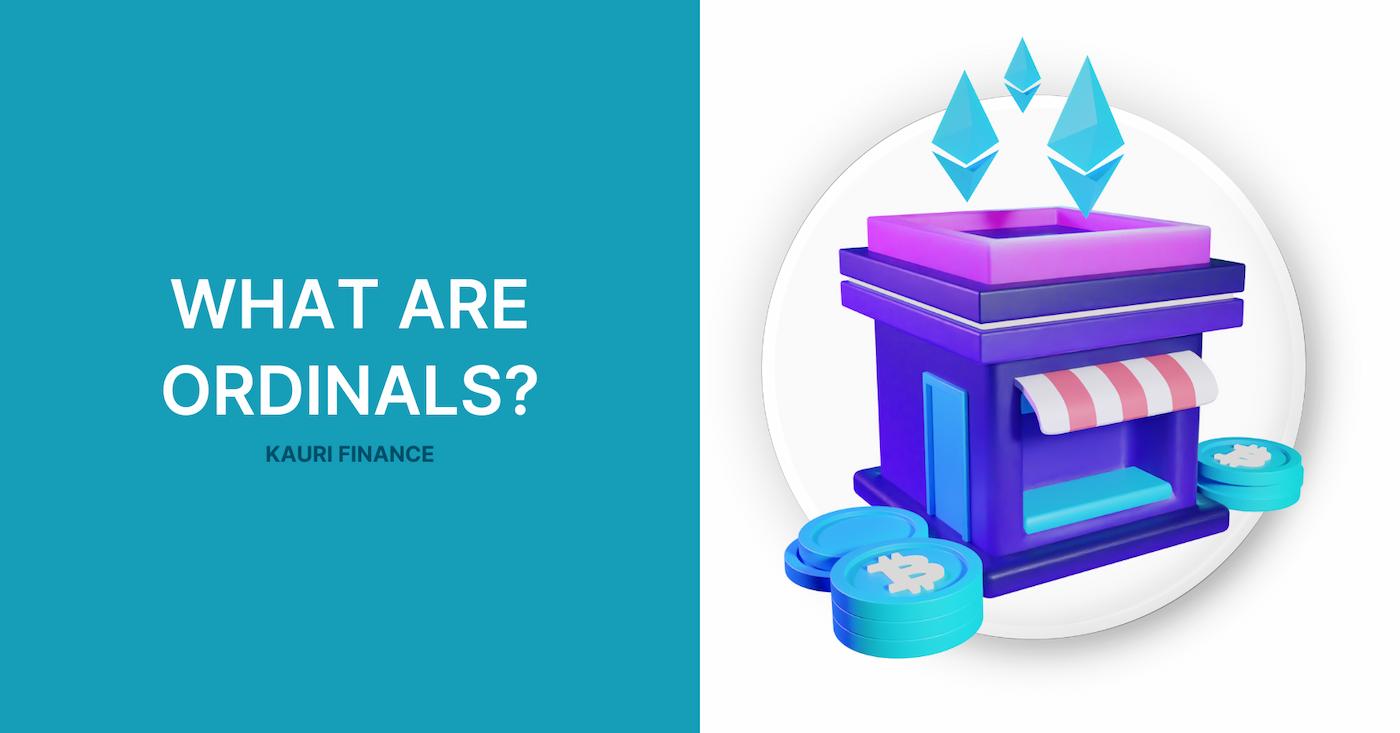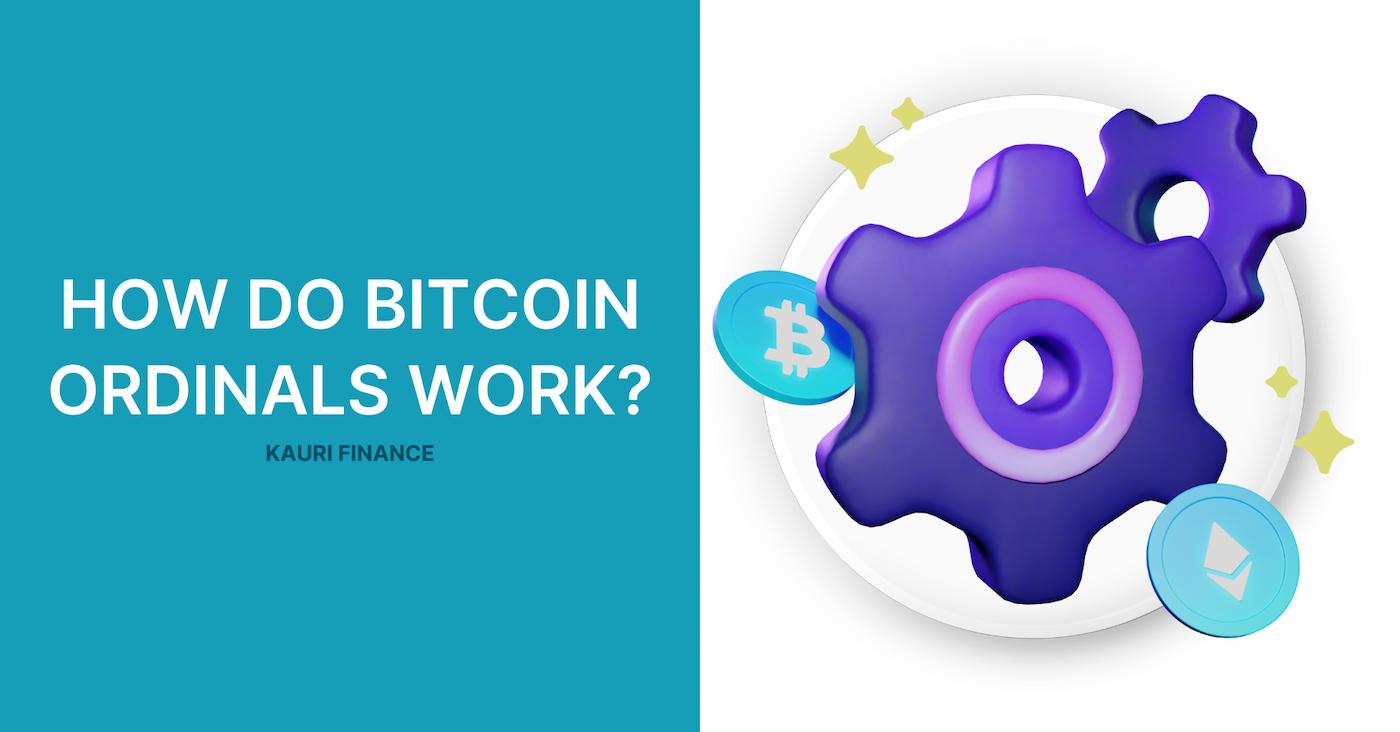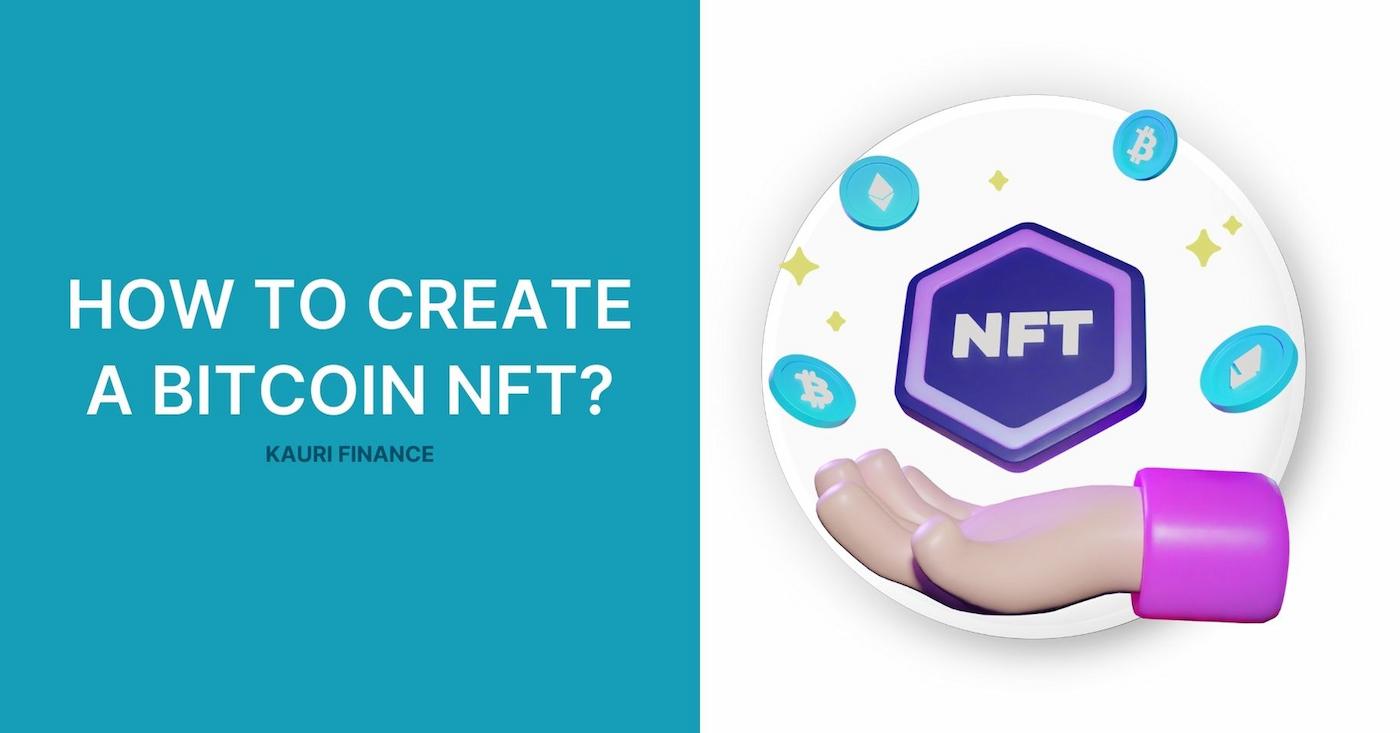
What are Ordinals? Informative Overview of Bitcoin NFTs

Since its inception, Bitcoin has predominantly been recognized as a revolutionary digital currency, reshaping our understanding of financial transactions in a digital age. However, the potential applications of Bitcoin extend far beyond its role as a currency. Recent developments have unveiled new capabilities of Bitcoin's underlying technology, particularly in how it can accommodate additional types of digital assets.
One of the most notable advancements is the introduction of Bitcoin Ordinals. This innovation marks a significant step forward in the integration of non-fungible tokens (NFTs) directly onto the Bitcoin blockchain. Unlike traditional NFTs, which are primarily associated with networks like Ethereum, Bitcoin Ordinals embed unique information into individual satoshis—the smallest unit of Bitcoin. This allows each satoshi to carry distinct, inscribed data, transforming them into one-of-a-kind digital assets. This development not only expands Bitcoin's functionality but also opens up new avenues for digital art and collectibles, securely anchored on the world's most established blockchain.
What Are Bitcoin Ordinals?
Bitcoin Ordinals has found a completely new approach to integrating NFTs into the Bitcoin ecosystem. This new concept allows Bitcoin-based NFTs to be created by placing unique data directly into individual satoshis through a process known as "inscribing."
Defining Bitcoin Ordinals:
Bitcoin Ordinals transform ordinary satoshis - the smallest denomination of Bitcoin - into individual digital artifacts. Each satoshi becomes a carrier of digital information, ranging from images and text to complex multimedia files. The inscription process involves attaching this data to the satoshi, effectively making each one unique and identifiable beyond its monetary value.
Emergence of Bitcoin NFTs:
The idea of NFTs on the Bitcoin blockchain came to fruition with the launch of the Ordinals project in January 2023. Previously, the concept of NFTs was predominantly associated with blockchains like Ethereum, which were specifically designed to support smart contracts and extensive data storage capabilities. The Ordinals project, however, leverages the fundamental attributes of the Bitcoin network—its security and widespread adoption—to host these unique digital items.
This innovation has been made possible by recent enhancements to the Bitcoin protocol, notably the Taproot upgrade, which expanded Bitcoin's scripting capabilities and improved its efficiency in handling complex transactions. By utilizing these advancements, the Ordinals project allows for each satoshi to not only act as a store of value but also as a platform for digital expression and ownership, extending Bitcoin’s utility beyond mere currency.
As a result, Bitcoin NFTs created through the Ordinals protocol have opened a new chapter in the blockchain's evolution, presenting an intriguing blend of digital art and collectibility with the robustness of Bitcoin’s architecture. This blend not only enriches the diversity of assets on the Bitcoin blockchain but also invites a broader community to engage with Bitcoin in new and innovative ways.
How Do Bitcoin Ordinals Work?

Bitcoin Ordinals revolutionize how data is stored and tracked on the Bitcoin blockchain by assigning a unique identifier to each satoshi and allowing for the permanent inscription of data onto these individual units. This process involves several technical elements that together create a new landscape for digital assets on Bitcoin.
Numbering and Tracking Satoshis:
- Ordinal Numbering: Each satoshi in the Bitcoin system is assigned a sequential number, known as an ordinal number. This numbering starts from the very first satoshi mined in the genesis block and continues in order as new blocks are mined. Each satoshi within a block also receives a unique ordinal number based on its sequence in the transaction list.
- Tracking Movement: The movement of these uniquely numbered satoshis is meticulously tracked across transactions. When a Bitcoin transaction occurs, it involves the transfer of satoshis from one address to another. The ordinal numbers help in tracking which specific satoshis are moved, allowing the entire history of any particular satoshi to be traced back to its origin.
Inscribing Data onto Satoshis:
- Data Inscription: The process of inscribing involves embedding data directly onto a satoshi. This data can include anything from simple text to images, or even more complex media like videos. When a satoshi is inscribed, the data becomes a permanent part of it, as long as that satoshi remains unspent.
- Method of Inscription: To inscribe data, the information is first converted into a digital format that can be encoded into a Bitcoin transaction. This is usually done using hexadecimal or Base64 encoding. The encoded data is then included in the output script of a Bitcoin transaction specifically designed to carry this extra data payload.
Leveraging the Taproot Upgrade:
- Enhanced Functionality: The Taproot upgrade, activated on the Bitcoin network in November 2021, plays a crucial role in the functionality of Ordinals. Taproot introduced more sophisticated scripting capabilities and improved the efficiency of data storage on the blockchain.
- No Need for Sidechains or Separate Tokens: Unlike other blockchain platforms where NFTs or similar assets require the creation of separate tokens or rely on sidechains, the Ordinals utilize the main Bitcoin blockchain directly. Taproot’s enhancements enable the embedding of complex data types directly into Bitcoin transactions without the need for additional layers or separate digital tokens, simplifying the process and maintaining Bitcoin’s robust security features.
Ordinal Theory and Inscriptions
Ordinal Theory is an innovative framework within the Bitcoin ecosystem, proposing a systematic approach to identifying each satoshi with a unique serial number, and it leverages these identifiers to facilitate the creation of digital assets directly on Bitcoin's blockchain. This approach not only adds a layer of utility to satoshis but also introduces a new dimension to collecting and trading digital assets.
Understanding Ordinal Theory:
Serial Numbering of Satoshis: Each satoshi, the smallest unit of Bitcoin, is assigned a sequential serial number, known as an ordinal number. This numbering begins with the very first satoshi from the genesis block and continues in order with each new satoshi mined. The numbering is consistent and predictable, based on the order satoshis are mined and included in the blockchain.
Rarity Ranks of Satoshis:
- Common: The vast majority of satoshis fall into this category, representing those that are not the first satoshi in their respective block.
- Uncommon: These are the first satoshis mined in each block, making them rarer than common satoshis.
- Rare: Even more scarce are the satoshis that are the first in each difficulty adjustment period.
- Epic: These are the first satoshis mined after each Bitcoin halving event, occurring approximately every four years, which significantly limits their number.
- Legendary: Denotes the first satoshi of each halving cycle, an even rarer event.
- Mythic: The pinnacle of rarity, this rank is reserved for the very first satoshi ever mined, located in the genesis block.
Significance Within the Blockchain:
The rarity ranks provide a structured way to value satoshis not just based on their monetary worth, but also on their historical and chronological significance within Bitcoin’s timeline. This system introduces a collectible aspect to satoshis, much like trading cards or limited edition items in the physical world.
Collecting and Trading Inscribed Satoshis:
- Collectible Appeal: The unique nature of inscribed satoshis, combined with their rarity, creates a compelling proposition for collectors. Each inscribed satoshi can carry unique digital art, metadata, or other forms of digital content, enhancing its value and appeal.
- Trading Platforms: As the market for Bitcoin Ordinals grows, it's likely that specific exchanges and trading platforms will emerge to cater to the buying, selling, and trading of these assets. These platforms will provide a marketplace for enthusiasts to acquire, trade, and sell rare and uniquely inscribed satoshis.
- Investment Potential: The rarity and unique characteristics of certain inscribed satoshis can make them highly desirable as a form of digital investment. Like rare art, their value can appreciate over time, especially as they become more recognized and sought after within the community.
Ordinals Pros and Cons
Here are the pros and cons of using Bitcoin's network for Ordinals:
Advantages:
- Enhanced Security and Immutability: One of the standout benefits of using Bitcoin for NFTs is leveraging its renowned security and immutability. Bitcoin’s blockchain, being the first and most secure, offers a robust platform where the data inscribed on satoshis is virtually tamper-proof and permanent. This makes Ordinals ideal for artists and creators looking to ensure their digital creations cannot be altered or erased.
- Decentralization: Bitcoin’s decentralized nature means that Ordinals operate without the need for a central authority, aligning with the ethos of true ownership and peer-to-peer transactions that blockchain technology advocates.
- Global and Open Network: Using Bitcoin’s widespread and well-established network means that Ordinals benefit from greater accessibility and potential reach, tapping into a broad audience and participant pool.
Challenges:
- Increased Network Fees: As Ordinals compete for space on Bitcoin’s blockchain, they contribute to larger block sizes and potentially slower transaction times during periods of high demand. This can lead to higher transaction fees, impacting the affordability of conducting Bitcoin transactions, not just for Ordinals but for regular Bitcoin transfers as well.
- Competition for Block Space: The fixed size of Bitcoin blocks means that there is a finite amount of transaction data that can be processed in each block. With Ordinals taking up a portion of this space, there’s an ongoing debate about the best use of this limited resource, especially considering Bitcoin’s primary role as a digital currency.
- Scalability Concerns: As more users look to create and trade Ordinals, the demand on the Bitcoin network could strain its capacity, leading to scalability issues that have long been a point of contention within the community.
Community Debate:
- Purists vs. Progressives: Within the Bitcoin community, there is a clear divide between purists, who believe Bitcoin should remain purely a currency without additional complexities, and progressives, who see the potential for innovation and additional functionalities like Ordinals. This debate touches on fundamental questions about Bitcoin’s future direction.
- Impact on Bitcoin’s Image: Some community members worry that the association with NFTs, which have been controversial in other blockchain communities, might affect Bitcoin’s image as a serious financial instrument.
- Incentives for Miners: As block rewards continue to halve, transaction fees will become increasingly important for miner compensation. Some argue that the increased fees from Ordinals could ultimately benefit miners and secure the network in the long run.
How to Create a Bitcoin NFT?

Creating a Bitcoin NFT using the Ordinals protocol involves several technical steps. Here’s a guide to help you navigate this process:
Step-by-Step Guide:
- Set Up a Bitcoin Node: The first step is to run a full Bitcoin node. This provides the infrastructure necessary to participate directly in the Bitcoin network and to interact with the blockchain in a more controlled and secure manner.
- Install a Taproot-Compatible Wallet: Since Ordinals make use of the Taproot upgrade, you will need a wallet that supports this technology. Taproot-compatible wallets can handle the specific types of transactions required to inscribe data onto satoshis.
- Choose Your Content: Decide what content you want to inscribe. This could be an image, a piece of text, or any other form of digital media. Prepare your content by converting it into a format suitable for inscription, typically a small file due to the size limitations of what can feasibly be inscribed on a satoshi.
- Inscribe Your Content: Use your Taproot-compatible wallet to inscribe your content onto a specific satoshi. This process involves embedding your digital content into a Bitcoin transaction and assigning it to a particular satoshi.
- Broadcast the Transaction: Once the inscription is prepared, broadcast this transaction to the Bitcoin network via your full node. The transaction will need to be validated and added to a block, making your inscribed satoshi a part of the blockchain.
Conclusion
The introduction of Ordinals has significantly impacted the Bitcoin ecosystem by opening up new possibilities for digital ownership and asset creation on what was primarily a financial blockchain. This innovation not only diversifies the types of transactions Bitcoin can support but also invites a broader range of users and creators to the network, enhancing its versatility and appeal.
